A fillet knife is a boning knife commonly used in a kitchen to fillet fish and meat. The sharp blades allow the user to easily and flawlessly debone the fish or meat. It operates by cutting along the backbone of the fish meat so that no part of the flesh gets wasted. These knives are usually made of stainless steel and have a length of approx. 6-12 inches. Though a fillet knife is meant to be used for cooking purposes, its flexibility and sharpness have made this knife a favorite choice to the survivalist and travel enthusiast.
You’ll need a quality fillet knife very often when you are hiking, trekking, or camping in an outdoor spot. But to get the best out of a fillet knife, one must carry a sharp knife. A dull knife is as useless as a fifth wheel. That’s why knowing the ways of sharpening a filleting knife is vital for both households uses and survival situations.
How to Sharpen a Filleting Knife

There are many effective ways of sharpening a fillet knife. One can choose the convenient one for him. The most common methods of sharpening a fillet knife involve the use of some household items.
You can sharpen the knives with a digital machine or do the exertion using different household items all by yourself, and you have both ways wide open. Go through the following section to know how to sharpen a fillet knife and decide which one is suitable for your situations both at home and outdoors.
How to Sharpen a Knife with Household Items?
A sharpener might not be there when we need it. This is very usual to be unable to find a necessary gear when we require it in the truest sense. That’s why having an alternative to the sharpening tools is a great idea no matter what if you are at home or out in the wilderness. Besides, using household items to do something requires less money; thus, it saves the cost.
You can sharpen a fillet knife using many household items such as a rock, rod, leather belt, a nail file, another knife, concrete etc., before that, you must know how to sharpen a knife at home.
Don’t confuse this sharpness with the actual sharpness of the knife which is achievable only by using a quality sharpener. Households items will be your greatest friend in need, but don’t take it for granted.
Leather Belt
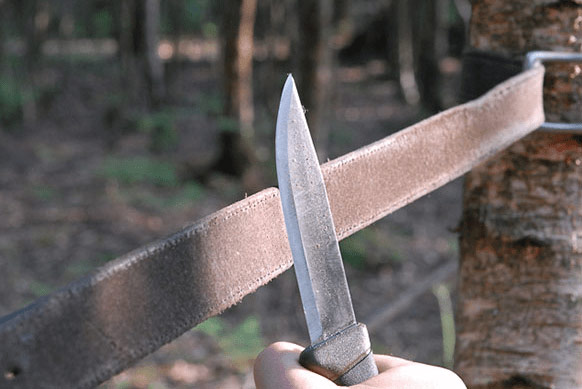
You might be wearing a beautiful and shiny leather belt right now. Well! That’s one of the most effective sharpeners out there. Typical saloon razors are honed using a leather belt or strop. The same technique goes for a fillet knife. Strop the blade across the length of the leather belt. It will surely hone the fillet knife and make it sharp realigning the blade.
Nail File
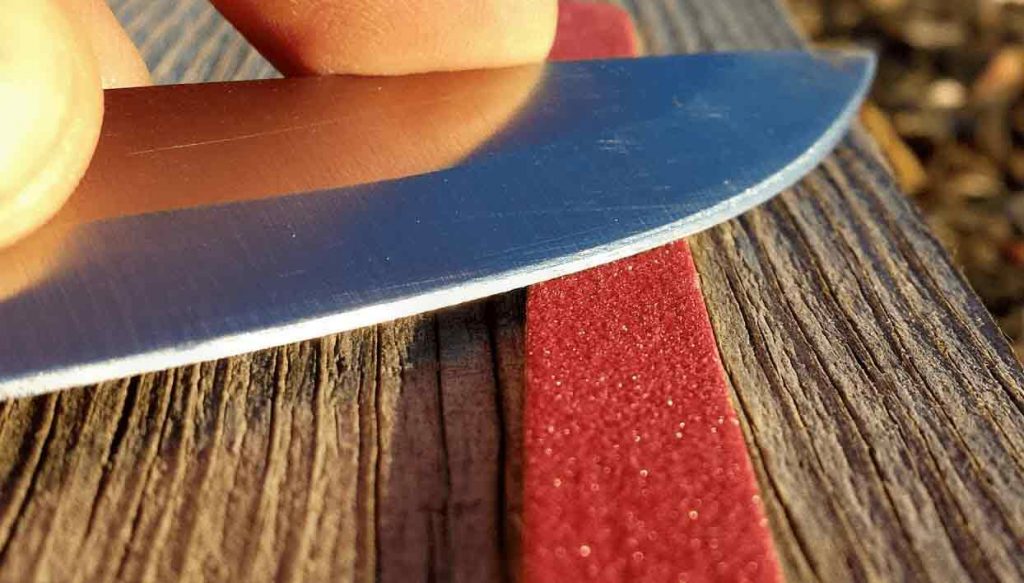
You surely have a nail file at your house even if you’re least bothered by beautification. Besides, this tool is so small that you can consider it as a travel or survival kit. Do you know how to sharpen a knife with a file? Nail file polishes the nails, and it has an abrasive part. This hard and uneven portion will facilitate the sharpening process. Run the knife blade against the emery board to get a sharp cutting end.
Coffee Mug
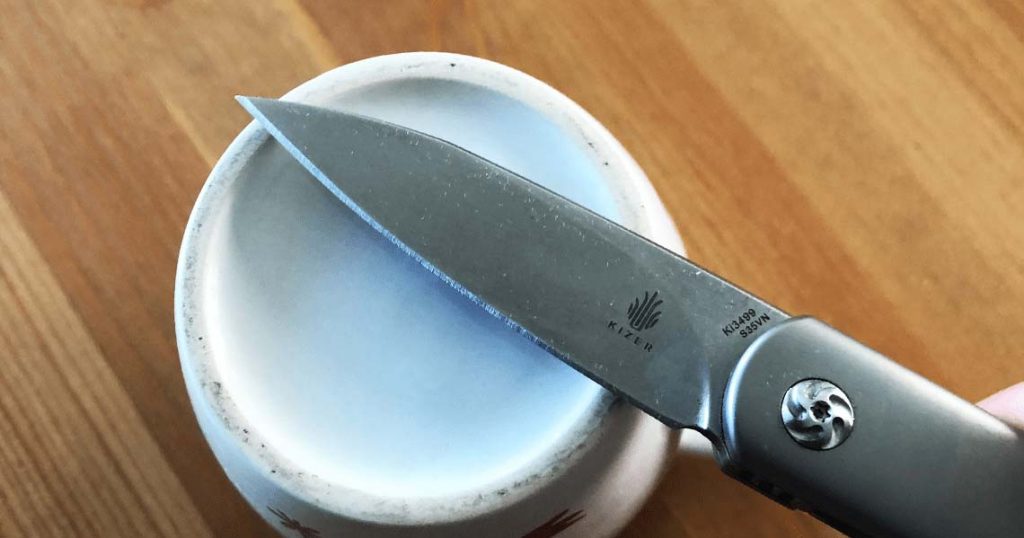
There’s no house which has no coffee mug. This is an extremely prevalent household utensil. You can use a coffee mug for sharpening a fillet knife. First, keep the mug upside down. There will be a raw part at the top of the reversed coffee mug. Run the knife across that tougher part of the mug. Don’t forget to pick a ceramic mug; a plastic mug will not do any good in this regard.
Concrete

In a world full of buildings and concrete, the good news is that you can use concrete to sharpen the knife effectively. Find out a smooth surfaced concrete and run the knife along the concrete the same way you would do it when using a sharpening stone. But, don’t forget to choose a portion of concrete which will not harm the beautification of the parent infrastructure.
Another Knife
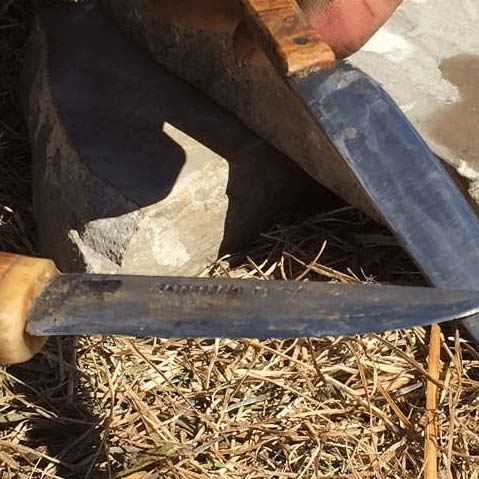
One can sharpen a knife using a second knife. Wondering how to sharpen a knife with another knife? Well! A knife has two types of edges: sharp and thin cutting end and a thick spine. The knife will be sharp enough if you run the fillet knife along the spine of the second knife just as you would do it when using a honing steel. To apply this method, you have to find a stronger and harder knife than the one you are going to sharpen.
Moreover, there are a few other sharpening tools that are used to sharpen a fillet knife. Know the rest from the below discussion.
How to Sharpen a Knife with a Rock / Whetstone?
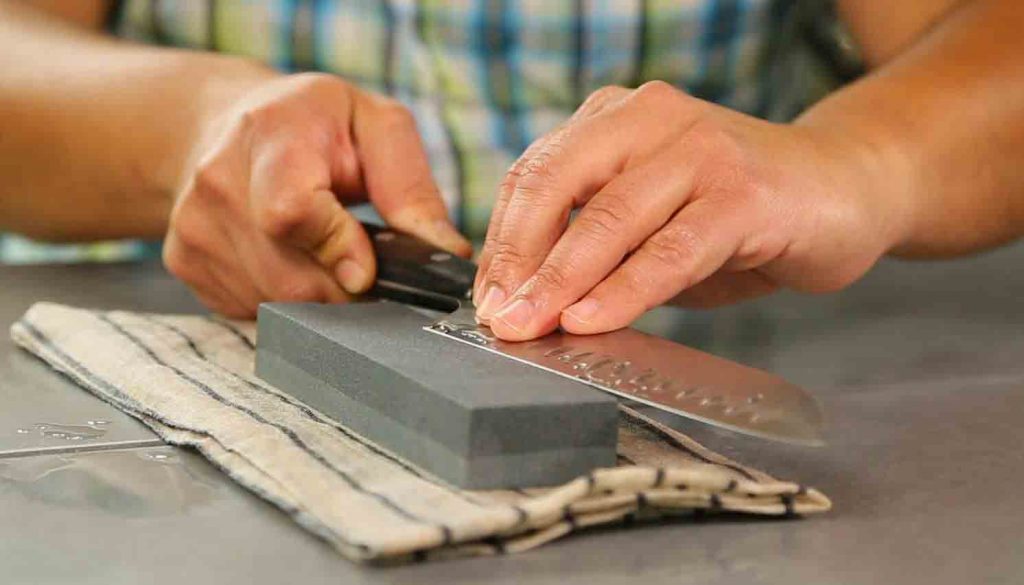
Using a sharpening rock or whetstone to sharpen a knife is one of the traditional methods of sharpening. This method allows you to have more control over the knife and a great comforting situation while sharpening. A whetstone works excellent in terms of sharpness of the knife and the ease of using this sharpening stone. And it doesn’t need any extra tool apart from the sharpening stone itself.
Steps Required
A few easy steps are enough to get a sharp cutting edge for your fillet knife. But one shouldn’t start sharpening the target knife right away. You have to learn the techniques and angles of sharpening the knife at first. Otherwise, you may end up having an unevenly edged knife which isn’t sufficient for cutting. The following steps are required to sharpen a knife with a rock or stone.
- Slide the cutting end of the knife over the whetstone or rock surface just like the way you would slice butter.
- Don’t make the thick end of the knife touch the stone. Then continue sliding the knife forward to make it sharp.
- One can use a coin to maintain the perfect angle in between the knife and the sharpening stone.
- Continue the process on both sides of the knife until you get the desired sharpness.
- Take extra care of your hands and fingers during the whole process. Be cautious to avoid any sort of injury.
How to Sharpen a Fillet Knife with a Rod?
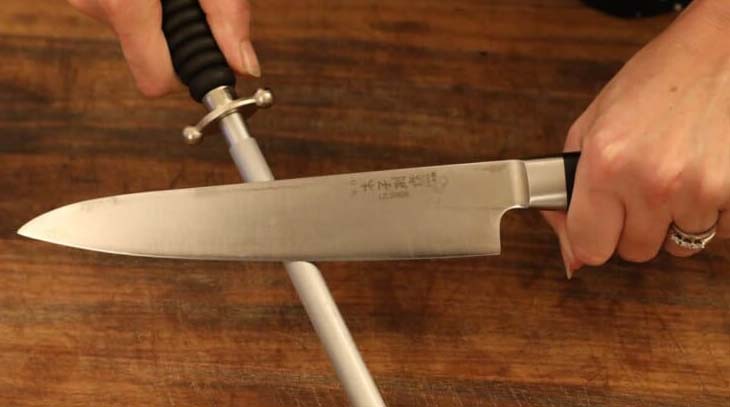
Some people use a rod or sharpening steel to hone a fillet knife. The method is straightforward and quick. All you have to do is slide the knife over the sharpening rod or steel keeping the right angle in between the knife and the steel. Don’t go for these ways to sharpen a knife if you’re not sure how to do this.
It involves potential risk. The best results will come if you include a filing tool on the process. This tool can help you if the knife needs a quick touch up during continuous cutting. Know the right steps to sharpen a fillet knife using a sharpening rod from below.
Tools Required
- A sharpening rod/steel
- A filing tool
Steps Required
You can sharpen a fillet knife very easily by using the following instructions.
- Keep the knife firm and slide the filing tool along the cutting edge of the knife in this step.
- Then use the same angle as you would do in case of sharpening with a stone and slide the knife in the direction away from your body.
- Continue the process until you’re satisfied with the sharpness.
How to Sharpen Electric Fillet Knife Blades with a Rod?
The cutting ends of electric knives are usually serrated to cut and carve cooking or decorative items especially. Some people think that these carving knife need not be sharpened since they are electric. This is entirely a myth. No matter what kind of knife one uses, he/she must sharpen the edges for optimal performance.
Steps Required
You can sharpen your electric knives with a rod by following the below instructions.
- Get rid of the machine and remove the electric knife gently.
- Take hold of the sharpening rod strongly. Then grip the knife by its flat base ensuring the cutting end faces away from you.
- Keep the sharpening rod in the first serration of the knife. Then run the knife up and down over the sharpening rod.
- Make sure that the application goes in the same direction and the same serration.
- Continue the process until you think the sharpness is perfect.
- Repeat the same process for the remaining serrations. Thus, you will get a completely sharp electric knife.
Sharpen a Filleting Knife Using an Electric Sharpener
There are both electric knife and electric sharpener. Using an electric sharpener is the simplest way among all other sharpening methods by a mile. One can easily sharpen his/her fillet knives running them through the thin slot of the electric sharpener. An electric sharpener will come in handy if you have a set of knives that requires sharpening regularly.
The striking benefits of this type of sharpeners are they require less effort and a moderate amount of money. These sharpeners have some limitations also. If the knife gets overly sharpened or polished, it may get damaged severely. Moreover, some top-quality sharpeners are highly costly and also occupies a lot of space in the kitchen top.
However, there are many types of electric sharpeners available at the marketplace. You must choose one which has options to sharpen both a regular knife and an electric knife. Learn how to sharpen a fillet knife using an electric sharpener from here.
Steps Required
Safety first! So, pick a sharpener that is safe to use having a safeguard to protect the fingers from getting cut. If the sharpener has multiple slots to be used as sharpener and polisher, that’s the best sharpener to buy. Once you have a sharpener, knowing how to use it is the next challenge. We have precise instruction to help you.
- Grip the filleting knife or separate the electric knife from the machine.
- Place the cutting end of the knife into the compatible sharpening slot.
- Start slowly and gently without much pressure.
- Hold the knife firmly while the sharpening goes on.
- Slide the blade up and down, keeping the sharpener in the same serration in case of sharpening a serrated edged knife.
- Complete the number of passes it needs through the thin slot to get the required sharpness.
Bonus Tips for Maintenance
You should take care of your fillet knife regularly to get extended longevity and better performance. Most of the people think that these knives don’t require maintenance as they are made of stainless steel.
Yes! Its stainless steel but the function of stainless steel is to prevent rust and corrosion. It doesn’t make the knife any sharper. So regular maintenance is necessary to get the best support from the fillet knife. Here are some bonus maintenance tips for your knife.
- Rinse the knife with lukewarm soapy water. Don’t pour hot water or dishwater. Extreme heat will harm the handle and other parts of the knife, which isn’t metal.
- Avoid putting the knife at the bottom of a metal pan. It will prevent any galvanic action such as one metal getting affected by the other. Thus, the edge will be fine without any damage.
- Don’t allow any washing agent to get stuck to the knife. Rinse the knife then wipe and dry it using a soft towel or tissue.
- Store the knives in a closed place as a safety precaution. You can keep the knife in the sheath, if any, provided with it.
A sharp fillet knife can be a constant companion of an angler and a survivalist. An angler must need to cook fish and prepare a delicious recipe very often. A filleting knife is more popular to the survivalist. In an adverse situation into the wilderness, a sharp fillet knife can save lives in some cases.
Besides, outdoor camping needs a knife for many reasons to cut various things. A dull knife will be a waste of time and effort if you try to cut something with it. That’s why knowing the methods of sharpening a knife without damaging the edges is really important.

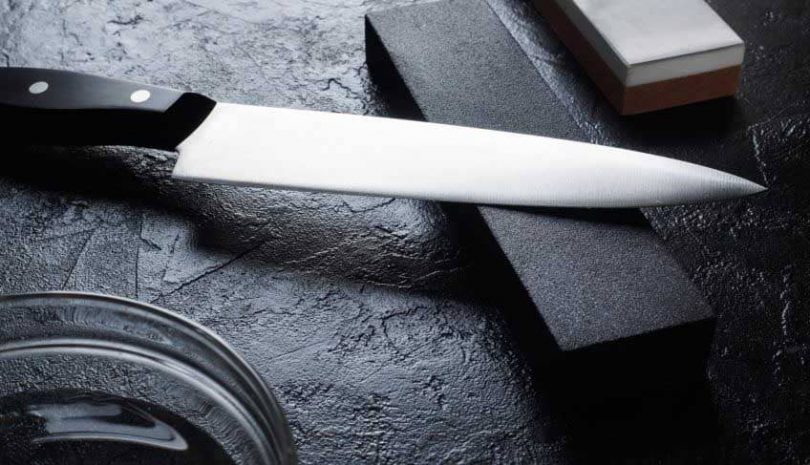






Leave a Comment